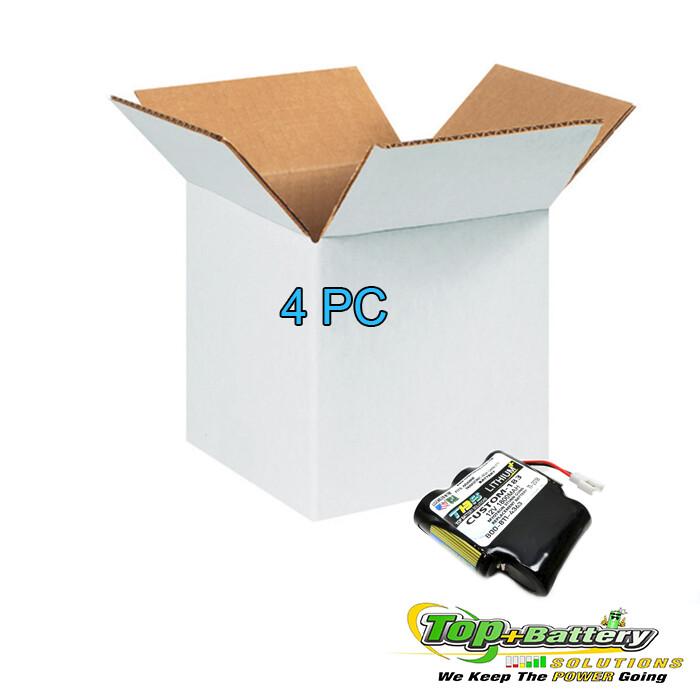Table of Contents
- Recognizing Decreased Power Output and Its Impact on Performance
- Identifying Rapid Battery Drain and Shortened Usage Time
- Understanding Device Heating and Safety Concerns
- Best Practices for Timely Battery Replacement and Maintenance
- In Retrospect
Recognizing Decreased Power Output and Its Impact on Performance
When the power output of your stun gun begins to decline, the immediate impact on its effectiveness becomes apparent. You might notice that the device no longer delivers the same sharp, disabling shock, making it less reliable for self-defense. This reduced intensity means that, in critical moments, the stun gun may fail to incapacitate an aggressor promptly, compromising your safety. It’s important to pay attention to these subtle shifts because even a slight drop in voltage can drastically affect performance.
Performance issues tied to decreased power output often manifest in a few telltale ways:
- Delayed activation: The stun gun takes longer to discharge than usual.
- Weaker spark generation: The visible electric arc appears thinner or dimmer.
- Reduced stun duration: The device’s shock feels less intense and fades quickly.
Recognizing these indicators early allows you to replace the battery before the device fails in a crucial situation, ensuring your stun gun remains a reliable tool when you need it most.
Identifying Rapid Battery Drain and Shortened Usage Time
One of the most straightforward indications that your stun gun’s battery is nearing the end of its life is a noticeable decline in how long it retains power during use. If you observe that your device no longer stays charged for as long as it used to or needs frequent recharging after minimal use, this is a red flag. Rapid battery depletion doesn’t just affect convenience-it critically impacts the stun gun’s reliability when you need it the most. A battery that drains quickly cannot deliver the consistent power necessary for optimal performance, leaving you potentially vulnerable in urgent situations.
Keep an eye out for these specific signs that signal an imminent battery issue:
- Shortened active usage time – The stun gun operates for noticeably less time before shutting off.
- Frequent low battery alerts – Warnings or indicators suggesting insufficient charge despite recent recharging.
- Slower recharge cycles – The device takes longer than usual to return to full power.
- Unpredictable power drops – Sudden, unexpected loss of charge during use.
Understanding Device Heating and Safety Concerns
When a stun gun battery begins to falter, one of the most noticeable effects is unusual heat generation during use or charging. This excessive heating not only compromises the device’s performance but also poses potential safety hazards. Overheating can cause internal components to wear out faster, leading to permanent damage and increasing the risk of malfunction. It’s essential to monitor the temperature of your stun gun regularly-especially if you notice it becoming uncomfortably warm after only a brief period of use.
Besides the physical discomfort caused by heat, the safety concerns related to device heating are critical to address. Continuous overheating may result in battery leakage, swelling, or in worst-case scenarios, an electrical fire. To prevent such risks, users should look for signs such as:
- Sudden temperature spikes when activating the stun gun or plugging it in
- Visible battery bulging or corrosion around the battery compartment
- Unusual odors that could indicate melting or chemical reactions inside the device
- Inconsistent power output coupled with heat generation
Addressing these signs promptly by replacing the battery not only extends the lifespan of your device but also ensures your personal safety and reliability during critical moments.
Best Practices for Timely Battery Replacement and Maintenance
Ensuring your stun gun’s battery is always in top condition starts with a proactive approach to maintenance. Regularly inspect the battery terminals for any signs of corrosion or debris, as these can impede the charging process and reduce efficiency. It’s also wise to keep the device charged according to the manufacturer’s recommendations-overcharging or letting it drain completely can both shorten battery lifespan. When storing your stun gun for long periods, remove the battery or fully charge it, then store it in a cool, dry place to prevent degradation caused by extreme temperatures.
Keeping track of performance changes is crucial. If you notice reduced spark intensity or a decline in operational time, don’t ignore these as minor issues; they often indicate that the battery is struggling. Incorporate a habit of testing your stun gun periodically, especially before situations where you rely on it for safety. In your maintenance routine, include these simple yet crucial practices:
- Use only the charger that came with the device to avoid electrical damage.
- Keep charging ports clean and free from moisture.
- Replace batteries promptly when lifespan indicators appear to preserve device reliability.
In Retrospect
In conclusion, staying alert to the signs that your stun gun battery needs replacing can make all the difference in an emergency. Regularly checking for decreased power, longer recharge times, or unexpected shutdowns ensures your device remains reliable when you need it most. By recognizing these clear indicators early, you’ll maintain your stun gun’s effectiveness and avoid being caught off guard. Remember, a fully charged and well-maintained battery is key to your personal safety and peace of mind. Don’t wait-give your stun gun the care it deserves and stay prepared at all times.Check Our Other Blogs
- StunGun – Your Trusted Source for Stun Guns, Laws, and Self-Defense Tips
- PepperSprayLaws – Your Trusted Resource for Pepper Spray Information
- StunGunLaws – Your Trusted Guide to Stun Gun Legality and Safety





